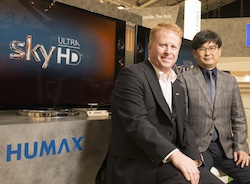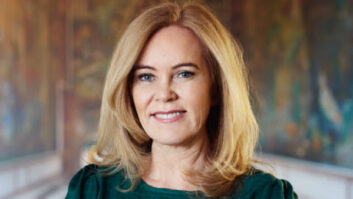
IBC will be awash with live or near-live test transmissions of 4K for TV and the word from some exhibitors is that Europe will see regular 4K transmissions within 18 months, or perhaps sooner.
SES on 12 September announced a pair of Ultra HD channels using HEVC for IBC. One of the channels, set up with Fraunhofer HHI, is broadcasting HEVC at higher frame rates.
Ferdinand Kayser, SES CCO, in a press briefing at IBC said: “Europe will be an early adopter of Ultra HDTV, with around 111 million displays in use by 2025.” He added that SES expected European’s preference for ever-larger screens would make Europe “The most attractive market” for early UHD channel launches. Quoting IHS Electronics & Media data, he said UHD display sales were already being made in modest numbers but would ramp up in 2014 and 2015 and would – in Western Europe – achieve 37% penetration by 2025.
Eutelsat and Intelsat are also showcasing 4K at IBC, while just about every heavyweight hardware, software and display vendor is also demonstrating 4K kit. Japan’s NHK is also showing its Super Hi-Vision 8K transmission system, and is happy to talk about the impact the 2020 Tokyo Olympics will make on the world’s demand for high-resolution Games footage.
Leading the European charge is Sky Deutschland, and its 4K session on Saturday (12.30, Room G102-G103) lines up SES, Pace, Harmonic and Sony TV to show off the technology. Also presenting is US broadcaster 3net, which is already investing in 4K new productions for TV including its flagship production ‘Space’ as well as other factual programming in 4K.
Sky Deutschland’s CEO, Brian Sullivan (pictured, left), maintains the same enthusiasm for 4K that he showed at IBC a year ago: “There has been a huge amount of progress during this last year although mostly driven by the industry rather than broadcasters. We have to deliver these technologies to the consumer and they need to be reliable, and cost-effective. We will be continuing on this path for the next year or three. But this doesn’t mean that things will take that long to materialise. You don’t always wait until a technology is fully developed [to bring it to market]. We take risks and we have to create the market.”







